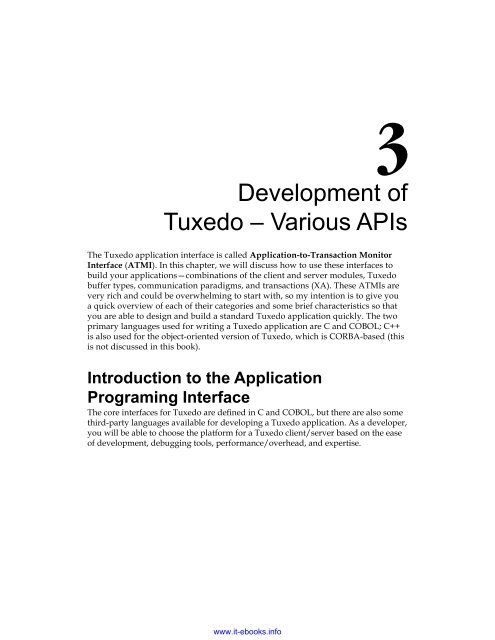www.it-ebooks.info
Create successful ePaper yourself
Turn your PDF publications into a flip-book with our unique Google optimized e-Paper software.
Development of<br />
Tuxedo – Various APIs<br />
The Tuxedo application interface is called Application-to-Transaction Mon<strong>it</strong>or<br />
Interface (ATMI). In this chapter, we will discuss how to use these interfaces to<br />
build your applications—combinations of the client and server modules, Tuxedo<br />
buffer types, communication paradigms, and transactions (XA). These ATMIs are<br />
very rich and could be overwhelming to start w<strong>it</strong>h, so my intention is to give you<br />
a quick overview of each of their categories and some brief characteristics so that<br />
you are able to design and build a standard Tuxedo application quickly. The two<br />
primary languages used for wr<strong>it</strong>ing a Tuxedo application are C and COBOL; C++<br />
is also used for the object-oriented version of Tuxedo, which is CORBA-based (this<br />
is not discussed in this book).<br />
Introduction to the Application<br />
Programing Interface<br />
The core interfaces for Tuxedo are defined in C and COBOL, but there are also some<br />
third-party languages available for developing a Tuxedo application. As a developer,<br />
you will be able to choose the platform for a Tuxedo client/server based on the ease<br />
of development, debugging tools, performance/overhead, and expertise.<br />
<strong>www</strong>.<strong>it</strong>-<strong>ebooks</strong>.<strong>info</strong>



